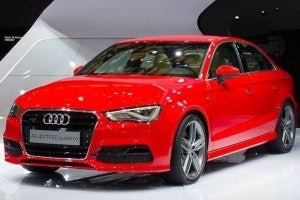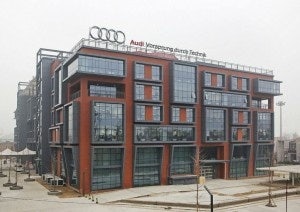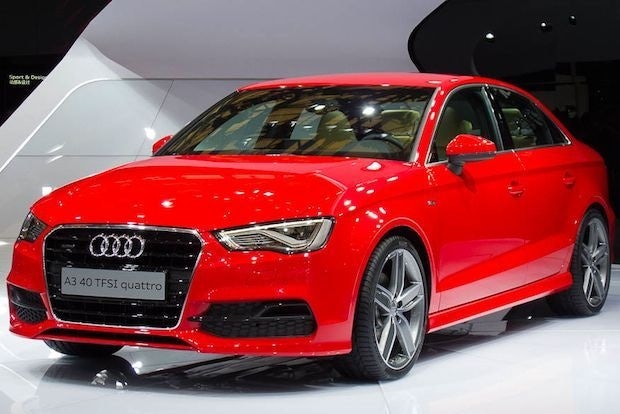Changes In Global Industry Point To Mainland As Creative Center#

Audi has invested in China as a research and development base. Pictured above is the Audi A3 sedan debuted at the 2013 Shanghai Auto Show. (China Daily)
In China, a significant evolution is taking place in industrial design, carmakers included. Many industry leaders point to the growing trend of leveraging the China car market as a creative base, not only to more effectively target mainland buyers but to export China-led designs under non-Chinese brands.
These themes were self-evident at the recentShanghai International Automobile Industry Exhibition. The show’s tagline, “Innovation for Better Life,” underscored how closely innovation within the automotive industry is tied to China’s 12th 5-year plan to develop Strategic Emerging Industries (SEIs).
The concept of scalable innovation is nothing new. Yet the auto industry’s promotion of China-based creativity legitimizes the CCP’s investment in growth driven by domestic innovation, rather than production. As Chinese brands struggle in their home market against foreign rivals, a strategic pivot has taken place: scalable innovation for global brands is increasingly driven by China-based joint-venture partnerships.
Localizing research and development (R&D) specifically for the China market not only meets government requirements for joint ventures but appears to be a strategic imperative. Public display of this commitment is particularly critical to maintaining strong relationships with Beijing.

Audi’s R&D Center for Asia in Beijing. (Audi)
As a result, major automobile manufacturers have become key participants in the execution of China’s innovation policies. Audi’s new research and development hub, the R&D Center for Asia at 751-D-Park in Beijing, is not only intended to develop localized designs for the China market but to serve as a global innovation base. Audi chairman Rupert Stadler described the new R&D center as “an important milestone in the internationalization of our innovation capacities.” With the opening of the center, Audi’s Beijing R&D staff jumped from 40 to 300.
Tata Motors has taken a similar approach with Jaguar Land Rover (JLR) through a joint venture with Chery, investing $1.75 billion to create an R&D center in East Jiangsu province that focuses on new technologies and lightweight aluminum body construction. JLR’s business in China is on the upswing, as their reported 2013 March sales for China rose 22 percent to 8,487 vehicles.
In addition to developing successful models for the China market, strategic R&D investments give car makers an edge in bolstering design and manufacturing capabilities in China for export overseas.
This trend is already evident at General Motors. According to the WSJ, the new General Motors, emerging from its $50 billion U.S. government bailout, has planned to invest $11 billion in new production facilities in China by 2016 – a somewhat awkward turn, given that GM’s U.S.-based investments have totaled $8.5 billion since the 2009 bailout. The company’s goal is to utilize China as an export base as well as a critical growth market. At the 2013 Shanghai Auto Show, GM China President Bob Socia, responding to the possibility that Chinese-made GM vehicles would eventually be made for the U.S. market, stated that “It could very well happen.”
Although marketing departments are likely to continue differentiating design for Chinese buyers—for example, by adorning Rolls Royce logos with dragons—clearly something more profound is happening. Automotive manufacturers are training a generation of China-based designers and using the China automotive market as a launching stage for new products, including theBMW X4 and Mercedes GLA concept vehicles. This development underscores not only the importance of new products succeeding in China, but the role that China will likely play in innovating and manufacturing new products for global markets.
